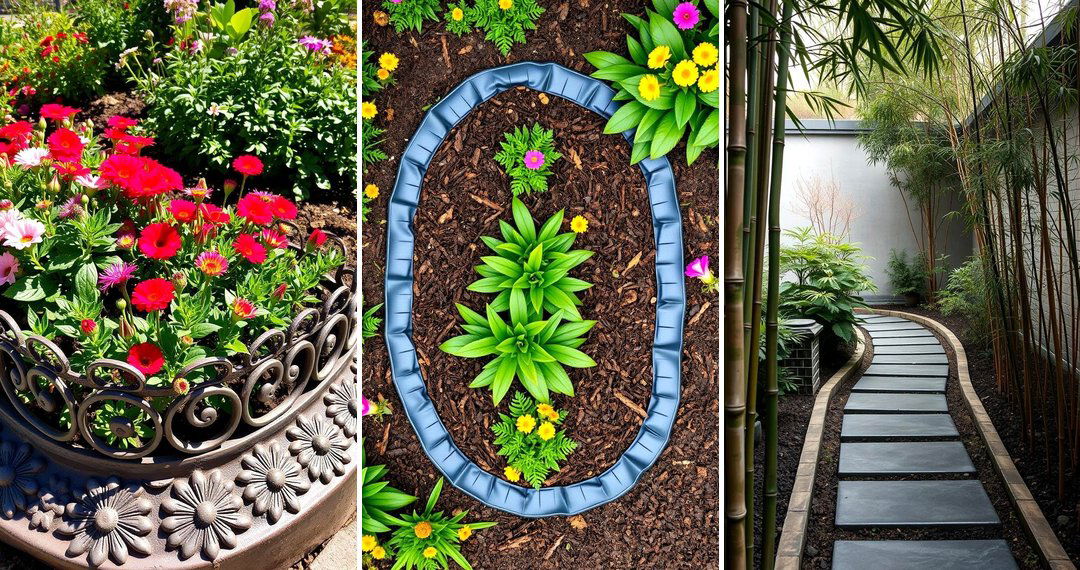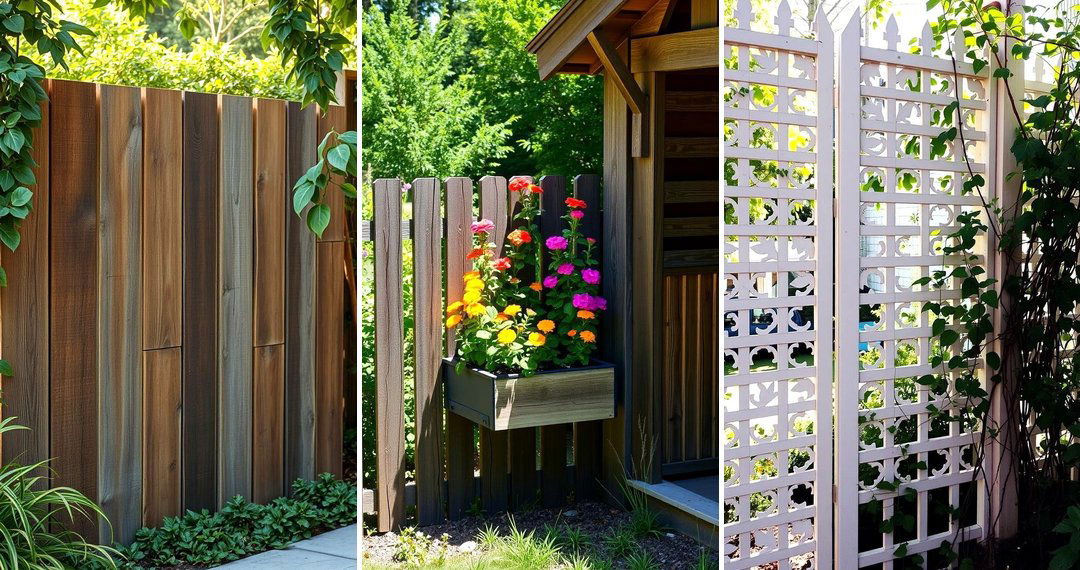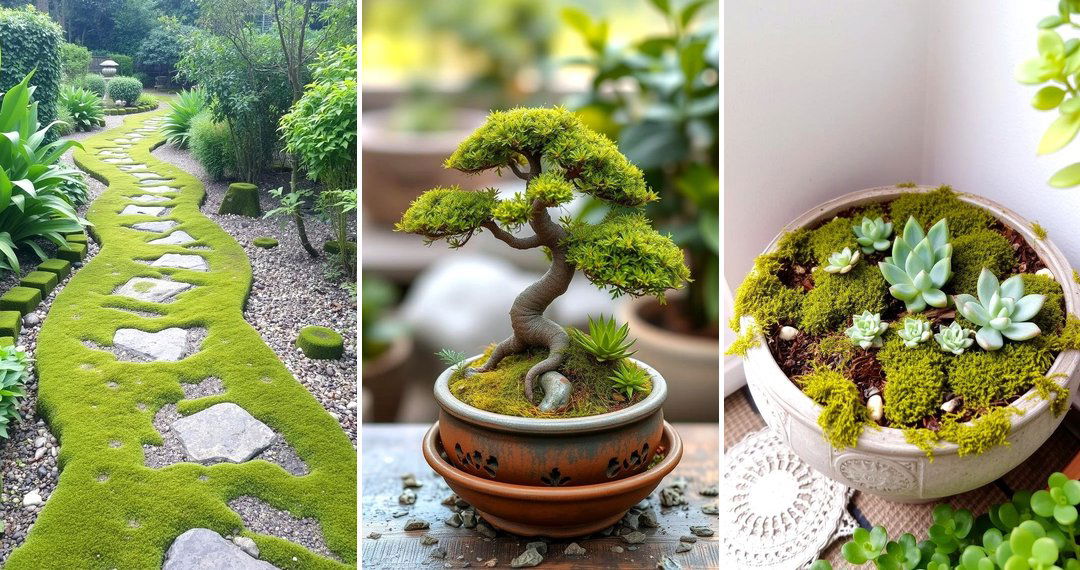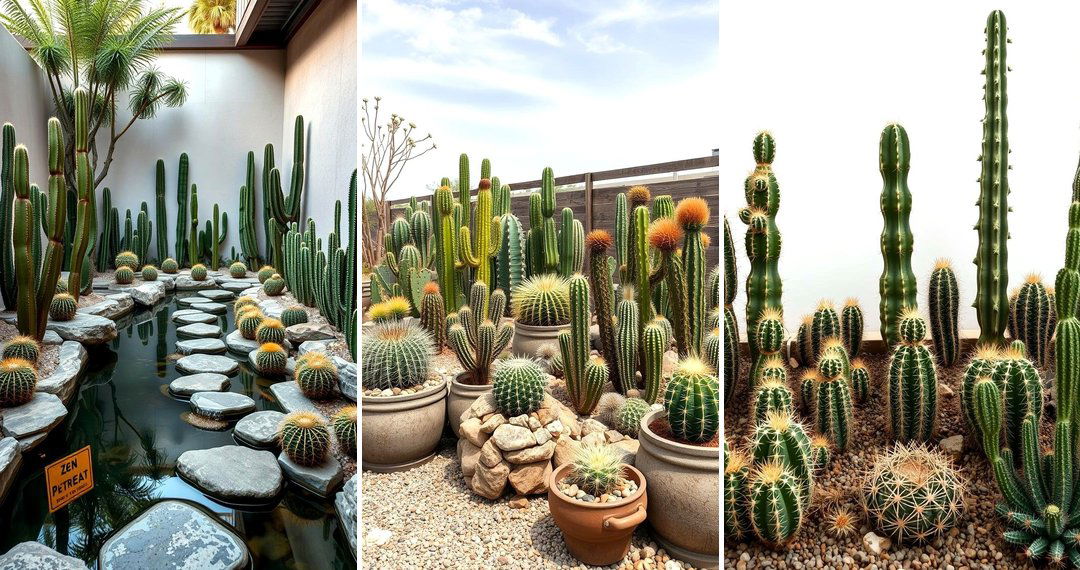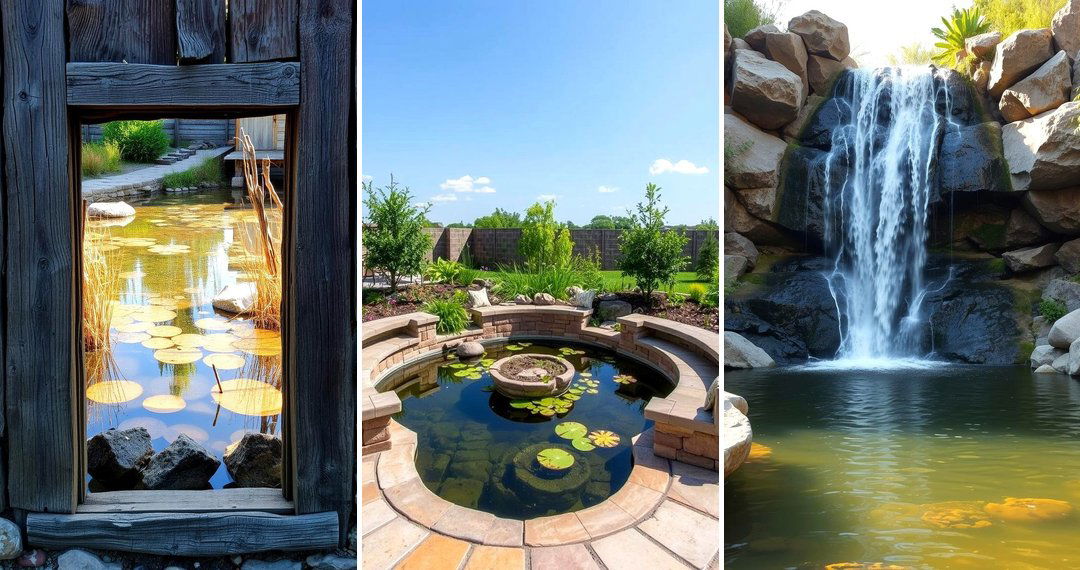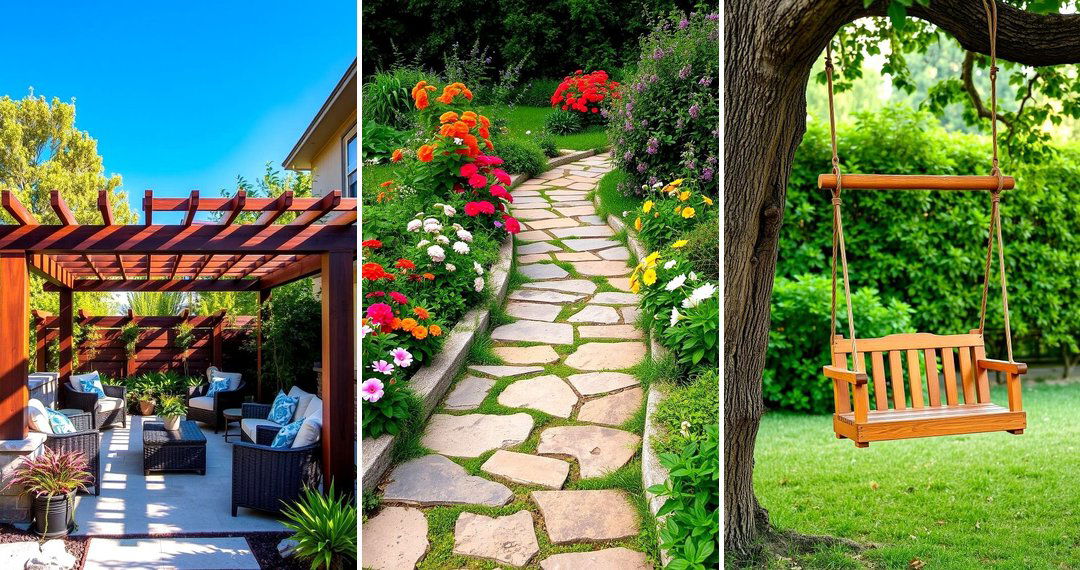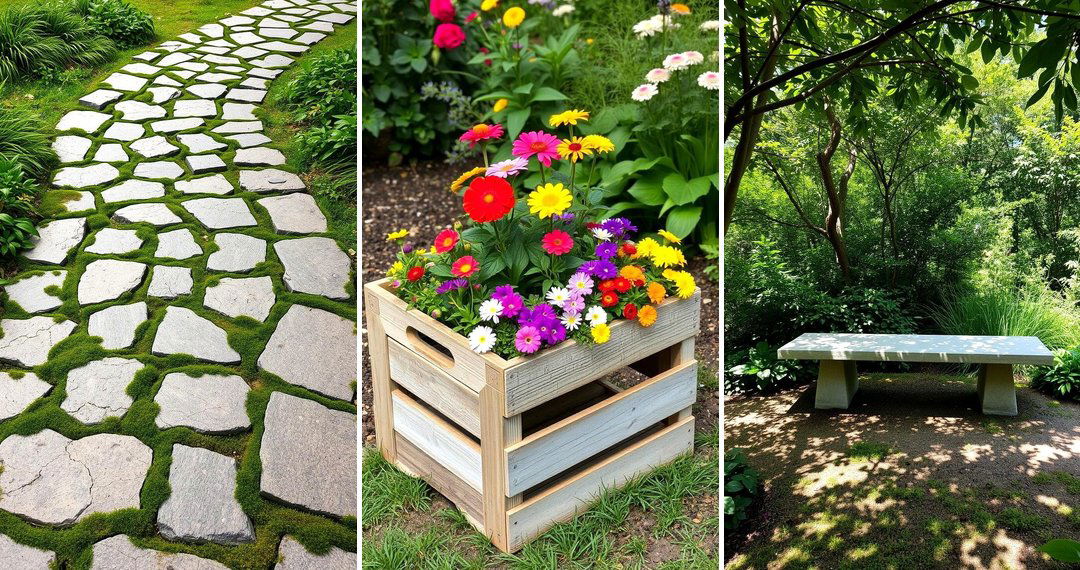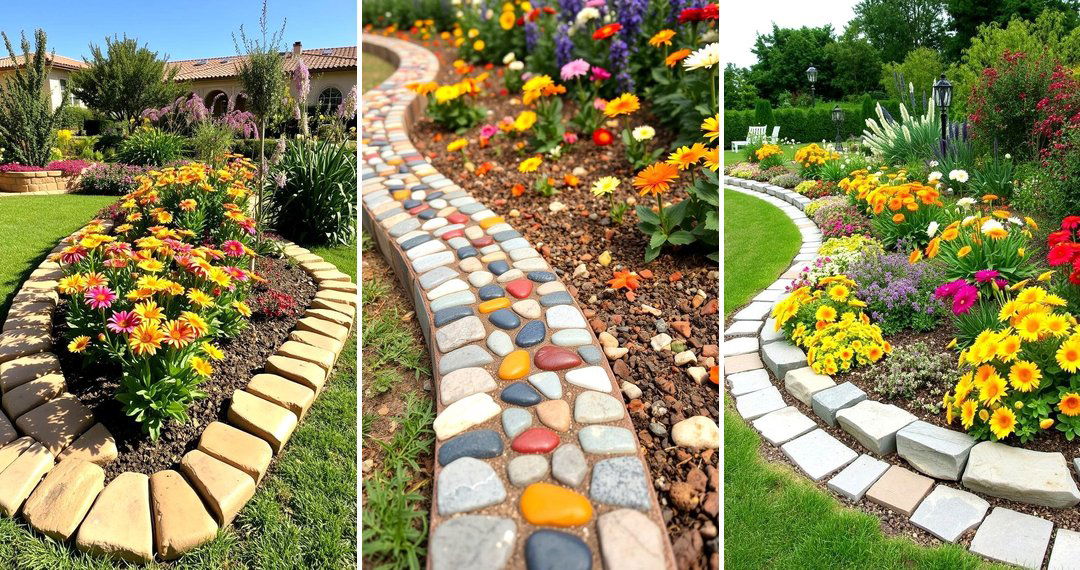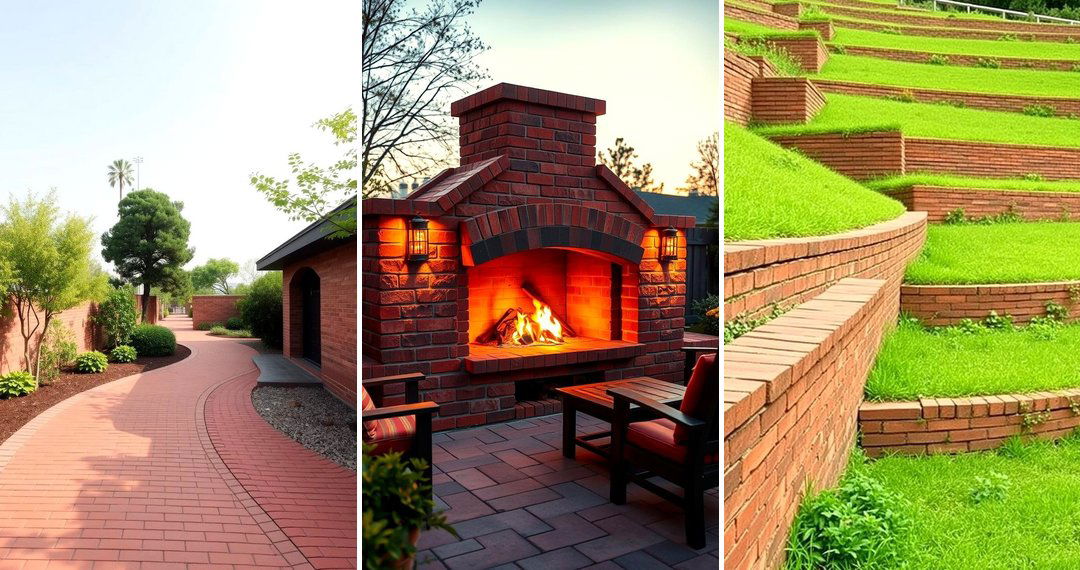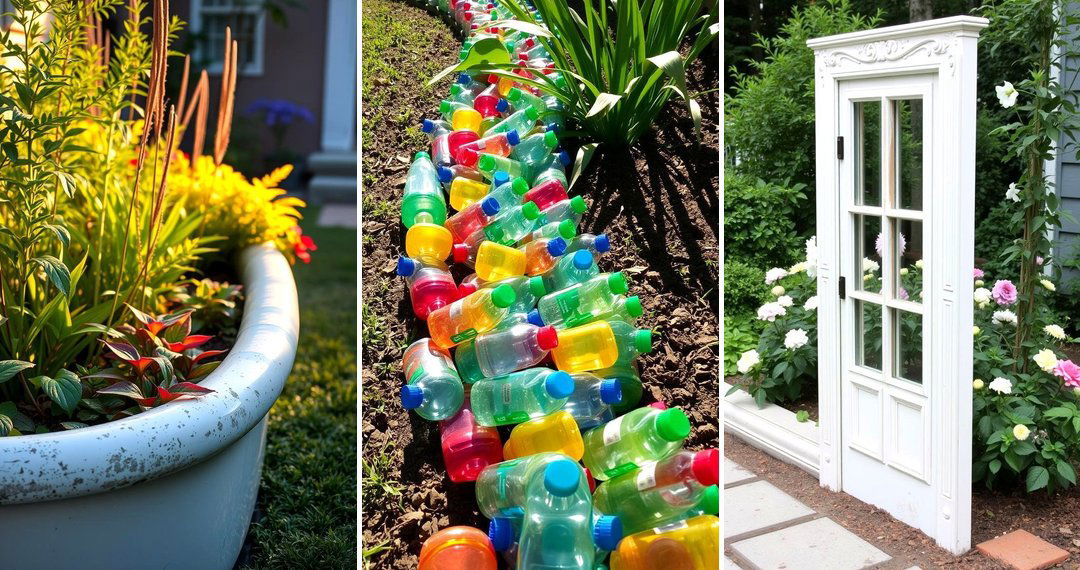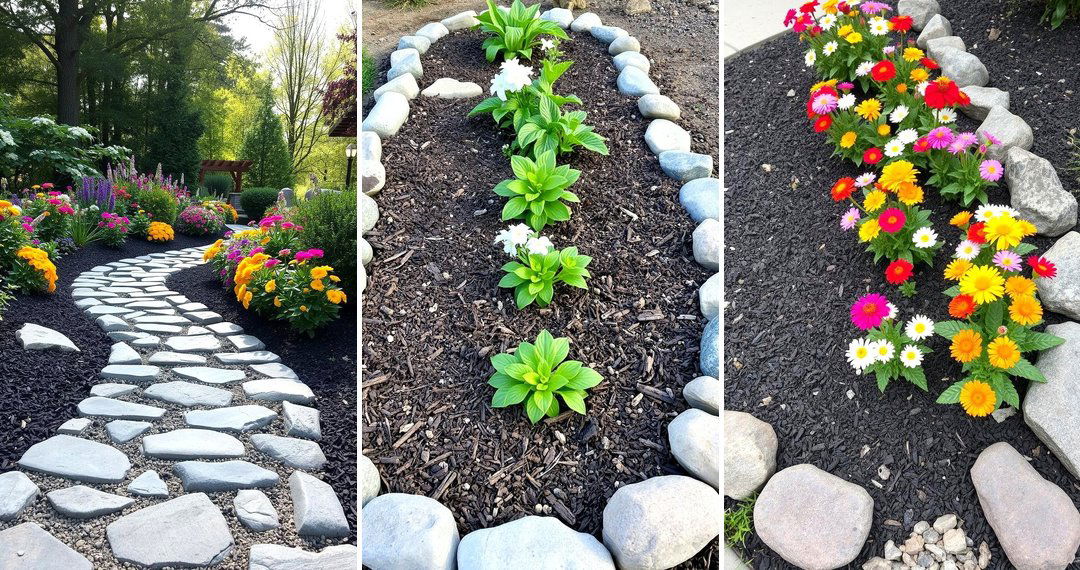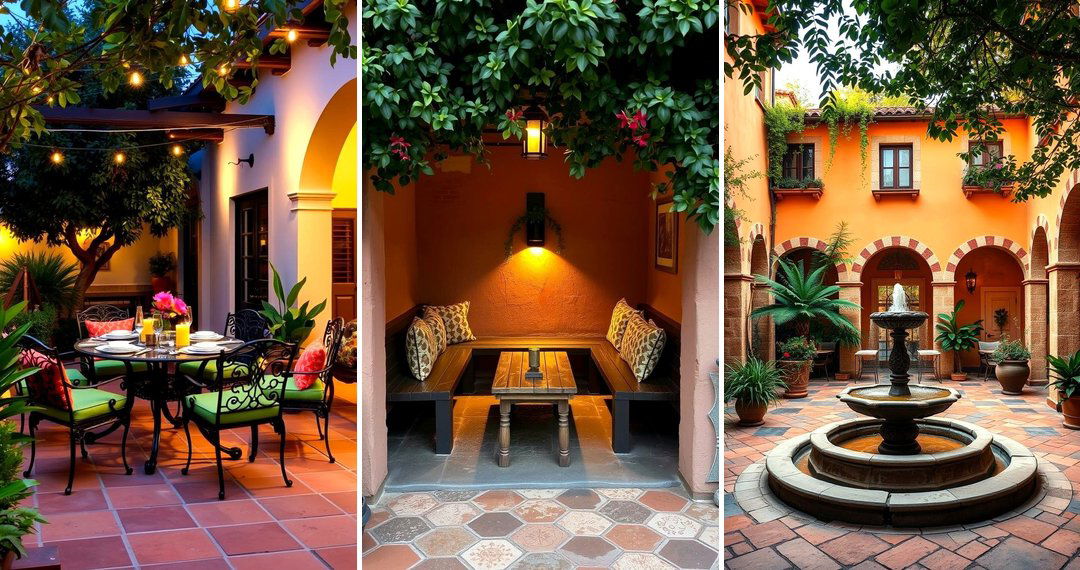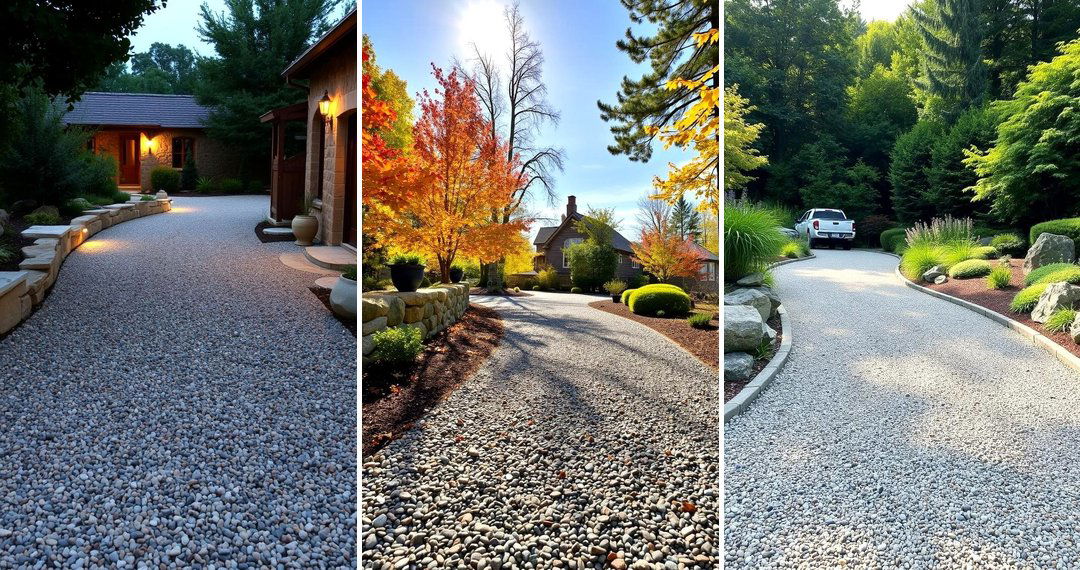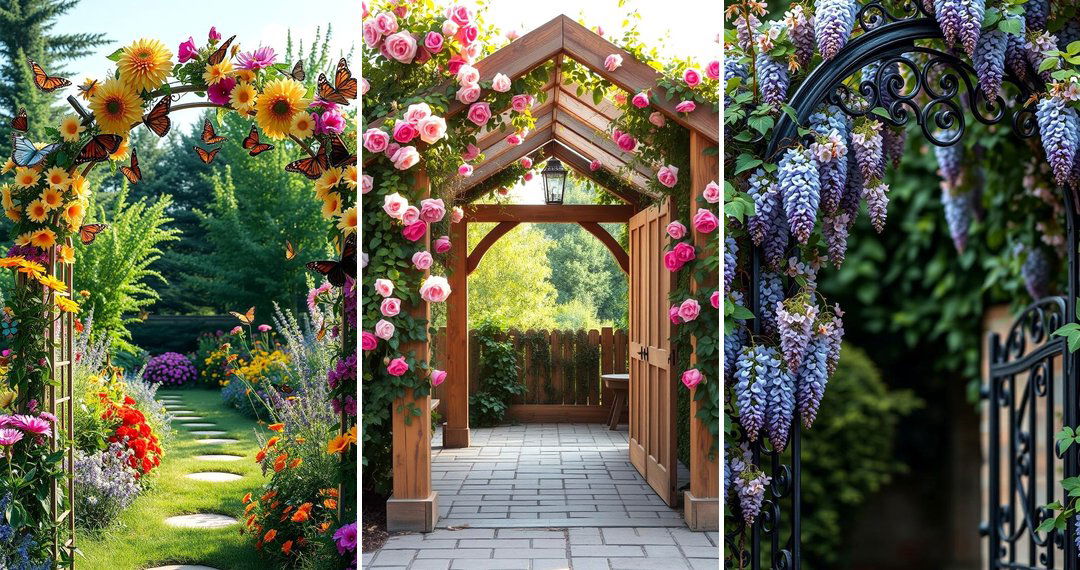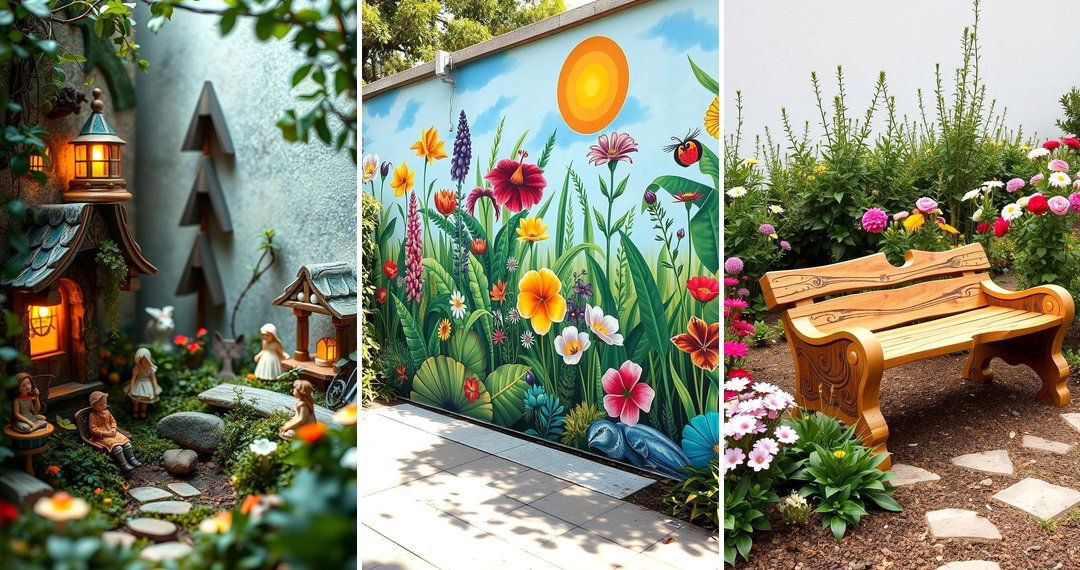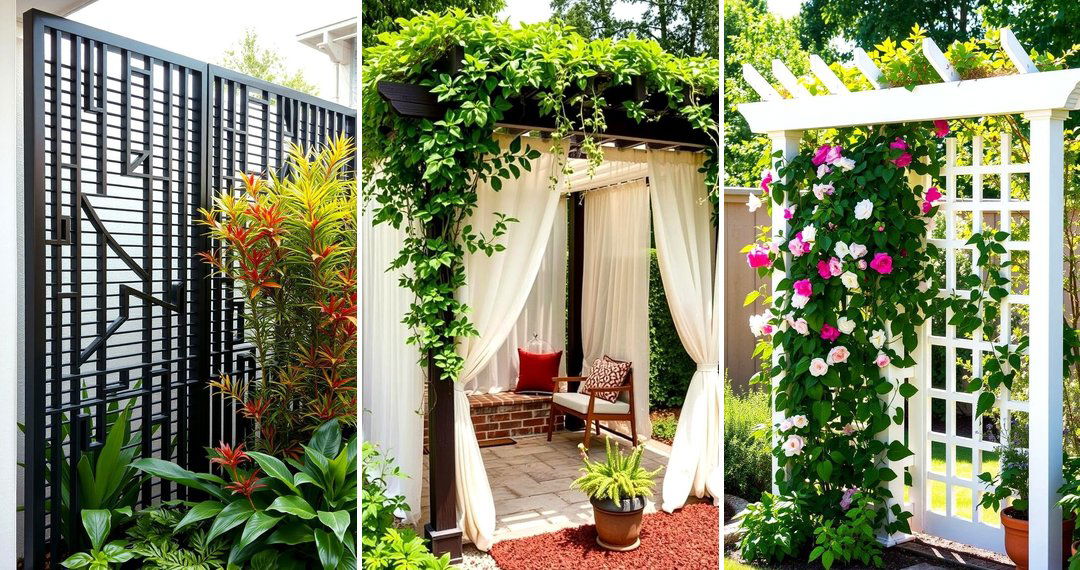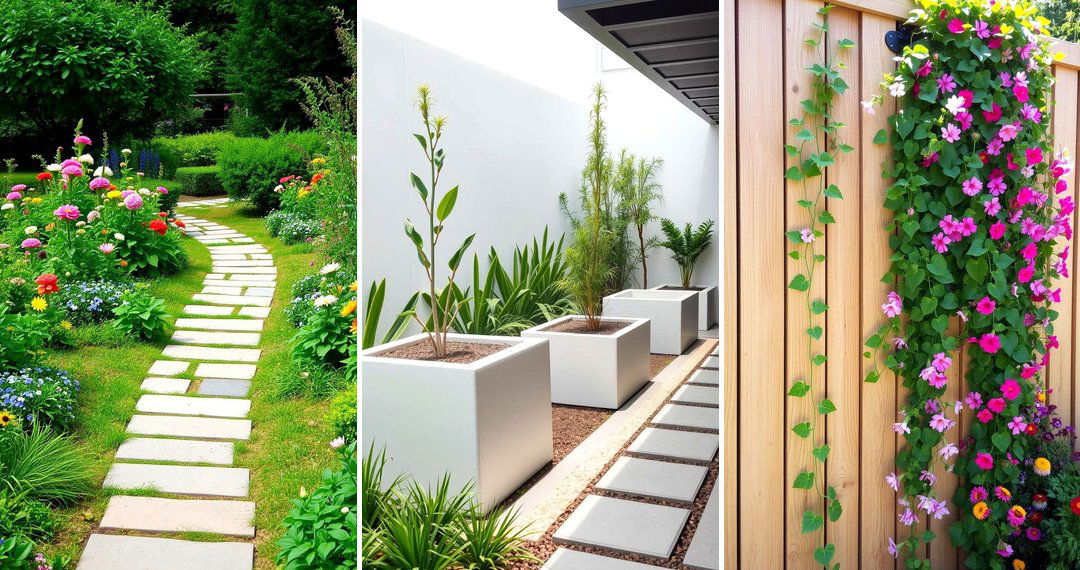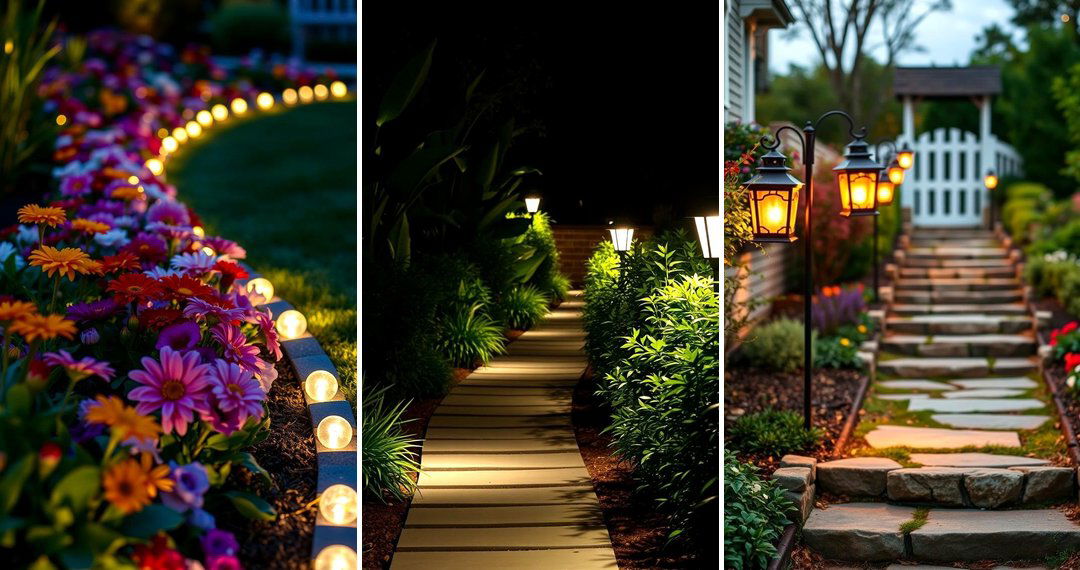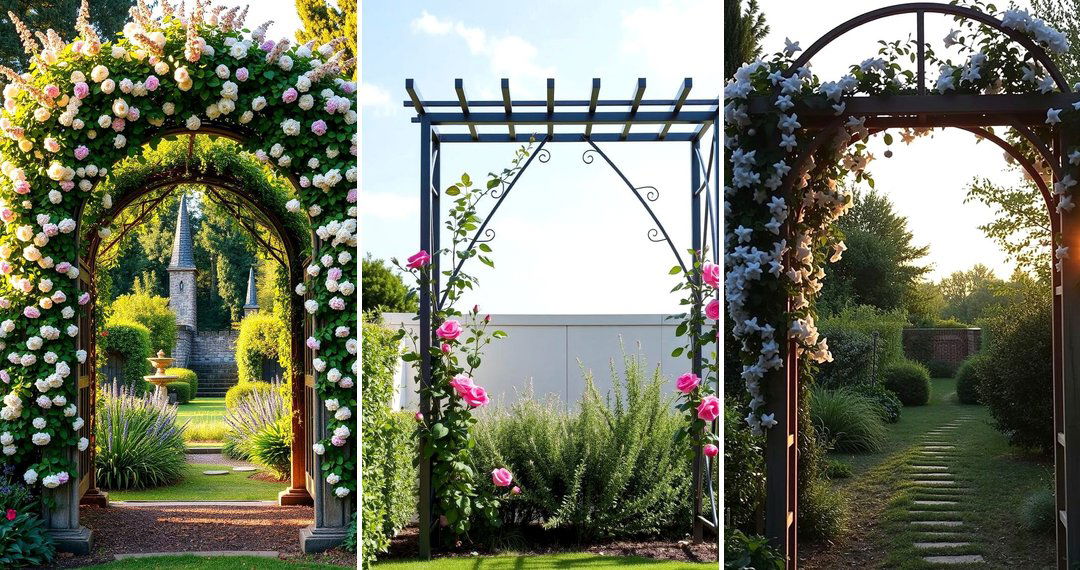Introduction:
Garden edging serves as both a practical and aesthetic element in any outdoor space. Whether you're looking to define garden beds, create a clear boundary between different plants, or simply add an extra layer of beauty, there are countless ways to style your garden edges. The right garden edging can enhance the natural beauty of your yard while keeping it neat and organized. In this guide, you'll discover 24 different garden edging ideas that bring a range of styles and benefits. From natural materials like stone and wood to more contemporary options, these ideas will inspire you to get creative and elevate your garden’s appearance. Get ready to explore the possibilities of transforming your garden with these innovative edging solutions.

1. Classic Stone Edging
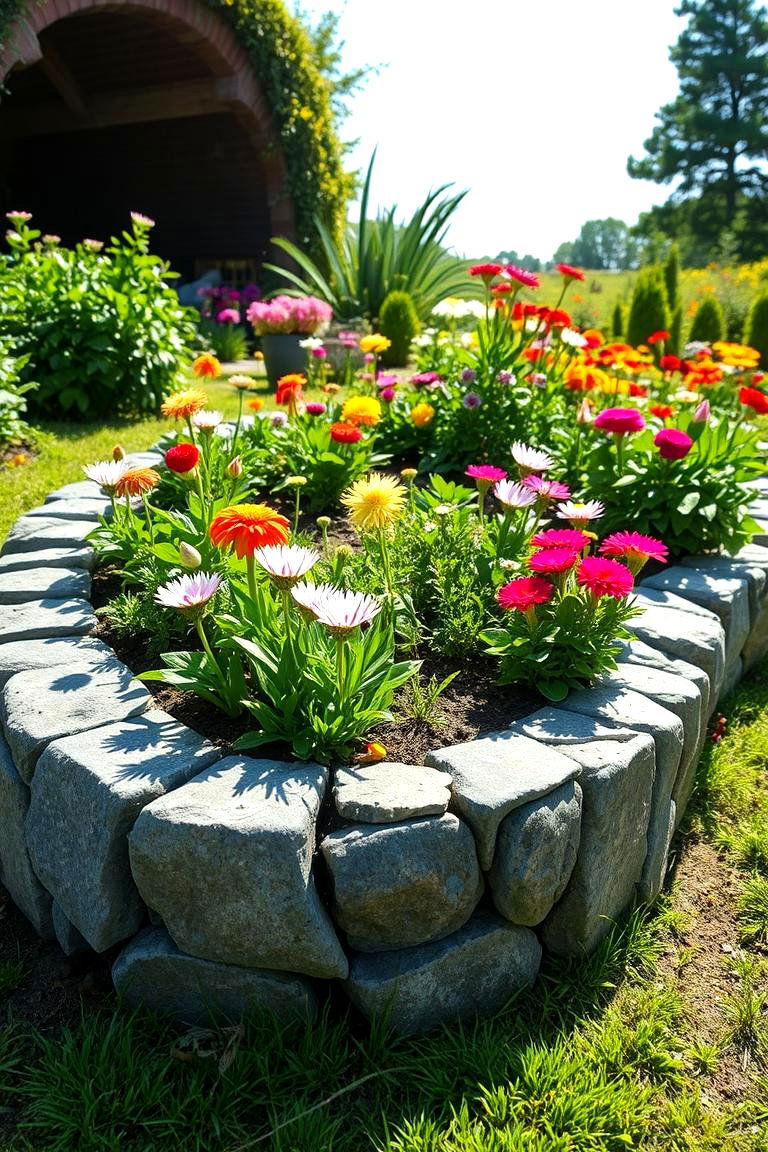
Stone is a timeless material that offers both durability and beauty. Whether you choose rustic, weathered stones or smooth, polished ones, stone edging can bring a sophisticated, natural feel to your garden. This style works particularly well for defining flower beds or creating pathways. The key benefit is its long-lasting nature, resisting wear and tear from weather and foot traffic. Plus, stones provide a sturdy barrier that prevents soil erosion and weeds from encroaching into your garden.
2. Wooden Plank Edging
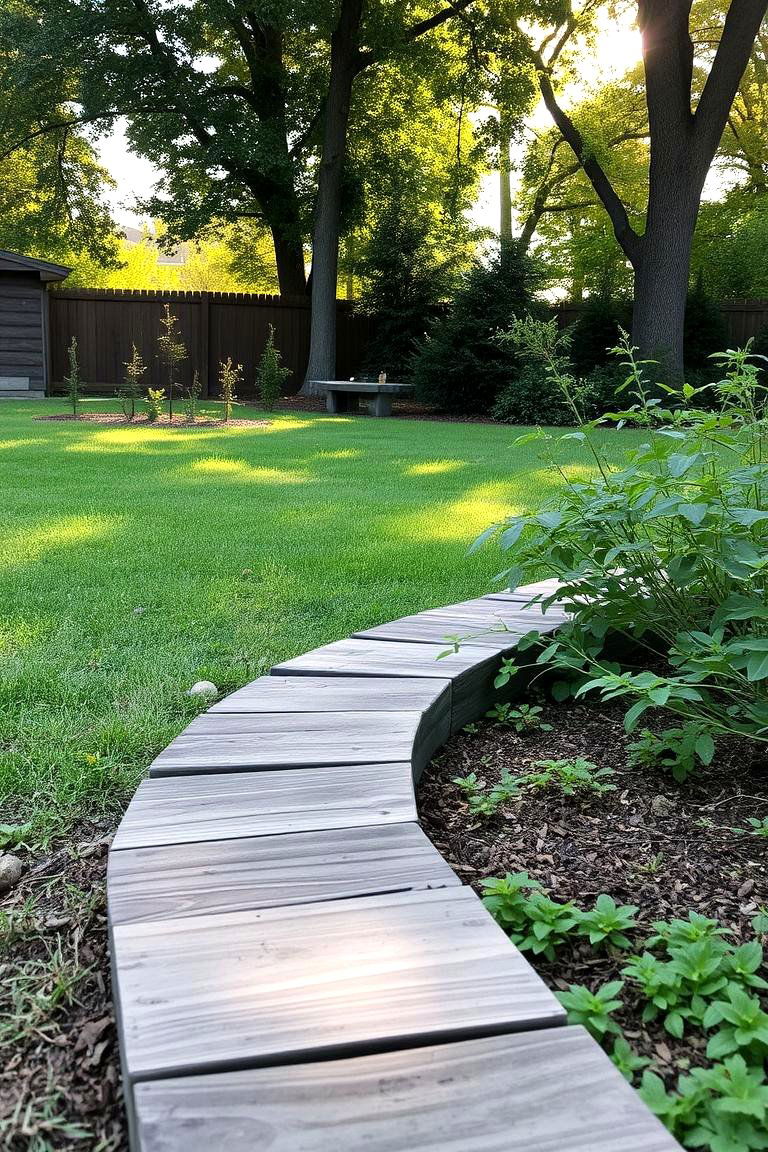
For a more rustic and natural look, wooden planks make for an ideal garden edging solution. This material gives your garden an earthy, organic feel, blending well with a variety of plants. Wooden planks also offer flexibility—they can be cut to size and installed in straight lines or curves, depending on your desired look. The best part is that wood is relatively easy to install and can be treated to withstand the elements, ensuring its longevity.
3. Brick Border
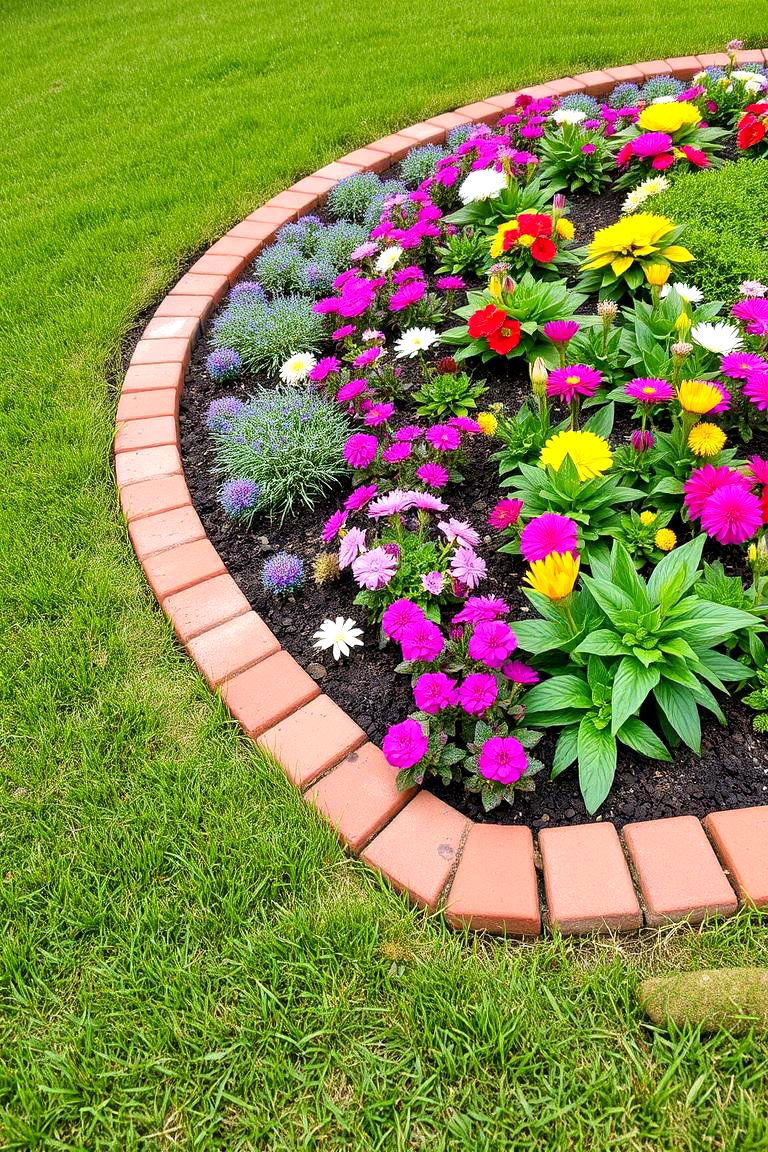
Bricks provide a strong, classic appearance that complements both traditional and modern garden styles. A brick border is highly versatile—use it to create a clean edge along flower beds or line walkways with a charming, structured look. Bricks can be laid flat or stacked to create a raised border, adding dimension to your garden. The durability of brick ensures that this edging will stand up to the test of time, making it a great investment.
4. Metal Edging

If you're looking for a more sleek, modern look, metal edging is a perfect choice. Available in various metals like steel or aluminum, this option can be bent to form curves or straight lines, providing a smooth, clean border. The great advantage of metal edging is its low-maintenance nature—metal won’t rot or decay over time, and it’s resistant to weathering. This makes it an excellent option for a contemporary, minimalist garden design.
5. Gravel Edging

Gravel offers a casual, laid-back feel while still being highly functional. A gravel border is an excellent option for defining walkways, garden beds, or separating lawns from flower beds. It is easy to install and maintain, and the loose material allows water to drain efficiently. By choosing a variety of colored gravel, you can further enhance your garden’s visual appeal, while the natural texture contrasts beautifully with vibrant plant life.
6. Concrete Edging
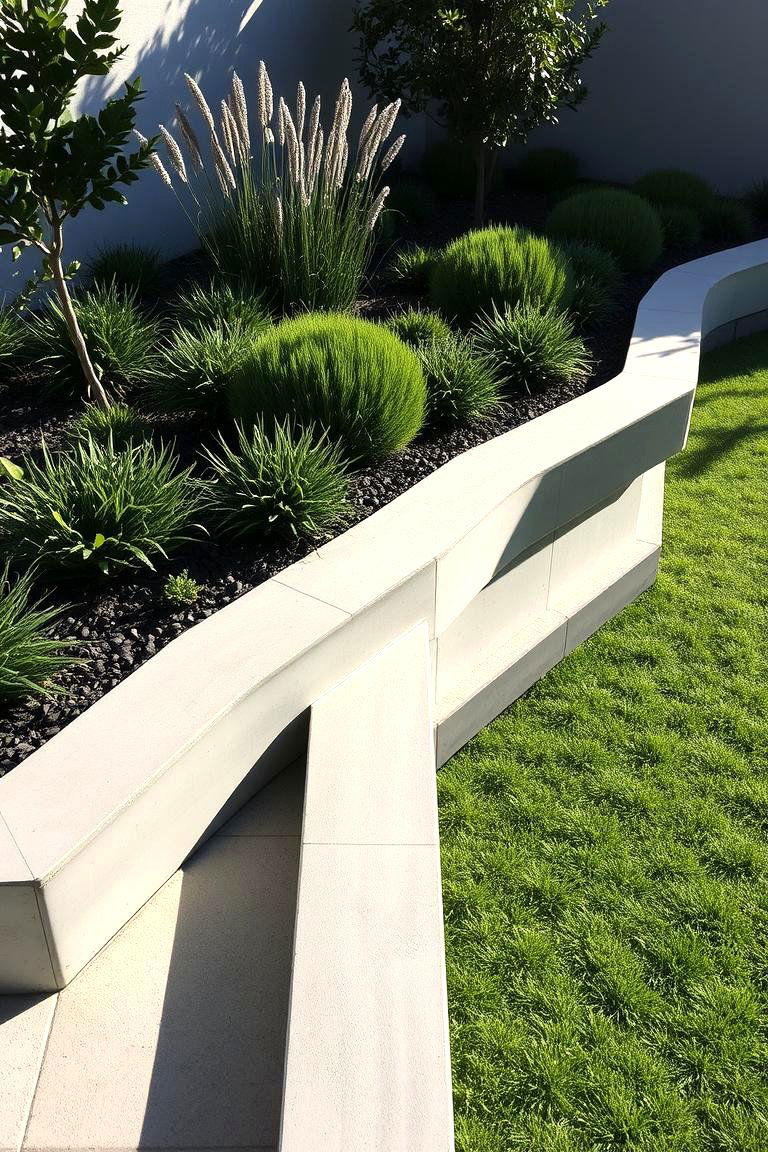
For a polished, durable option, concrete edging is ideal. It can be molded into any shape or design, allowing for a completely customized border. Concrete is extremely long-lasting, resisting damage from weather or pests. If you’re aiming for a more industrial or modern design, concrete offers a clean, straight-edge finish that pairs perfectly with minimalist landscaping. Plus, it can be stained or painted to match the colors of your garden.
7. Recycled Material Edging

Sustainable gardening is becoming increasingly popular, and recycled materials offer a great way to incorporate eco-friendly options into your landscape design. From old wood to repurposed plastic or rubber, recycled materials can create an attractive and environmentally conscious garden border. These materials are often lightweight, easy to install, and can add a touch of creativity and originality to your garden.
8. Paver Stone Edging

Paver stones combine both function and beauty. They come in an array of shapes, colors, and textures, making them a versatile choice for any garden style. Use pavers to outline flower beds, pathways, or even create a patio area. The interlocking design of paver stones ensures stability, preventing shifting over time, while offering a refined and polished look that enhances your garden’s aesthetic appeal.
9. Terracotta Pot Edging
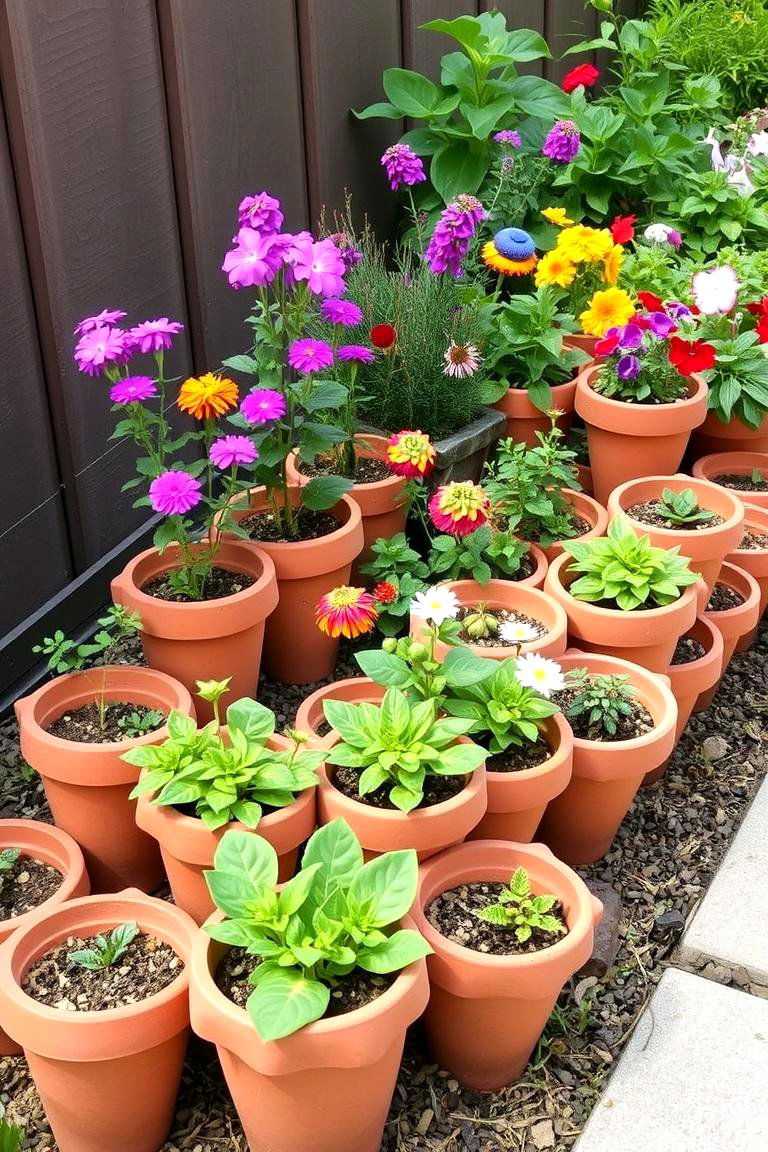
A unique and charming option is to repurpose terracotta pots as edging. By cutting them in half or laying them end-to-end, you can create a distinctive border that adds a touch of rustic charm. The natural orange hue of terracotta blends beautifully with various plants and flowers, making it an ideal choice for a warm, inviting garden. Additionally, these pots can be filled with plants, adding more greenery and color to the edge of your garden.
10. Cedar Log Edging
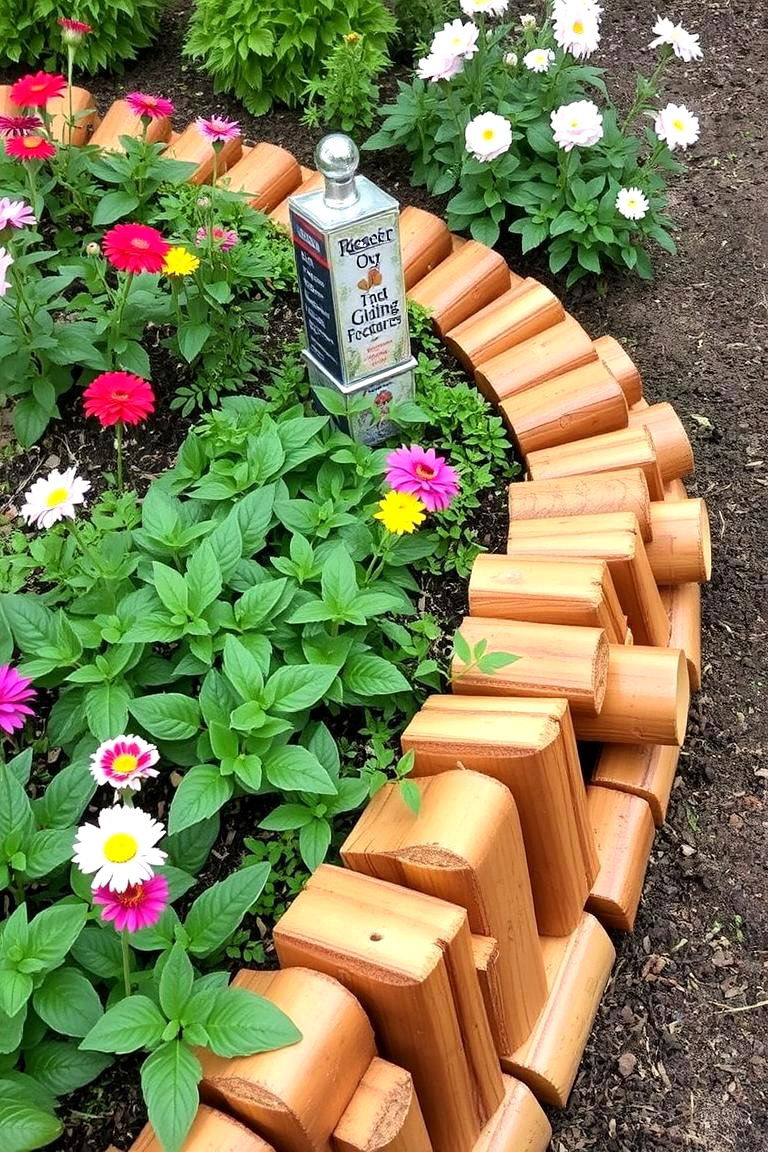
For a natural and rustic vibe, cedar log edging is an excellent option. Cedar logs are known for their attractive appearance, and their natural aroma also helps keep pests away. They can be used to outline garden beds or even create a low retaining wall. Cedar is naturally resistant to rot, which makes it a long-lasting option for your garden’s edges. The rich color of the logs will also complement any landscaping design.
11. Cobblestone Border
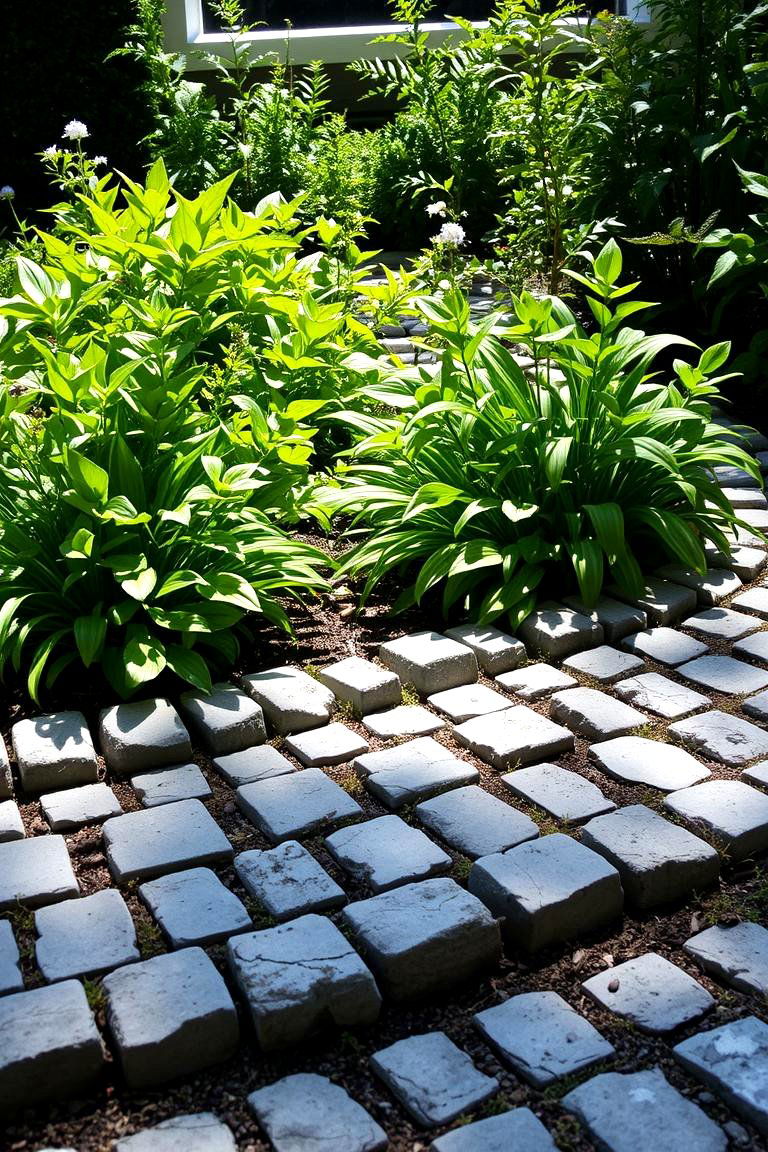
Cobblestone edging brings an old-world charm to your garden. Whether used to line a pathway or mark the borders of flower beds, cobblestones have a unique, textured surface that enhances the visual appeal of any garden. These stones are highly durable and have a timeless look that pairs well with both modern and traditional landscaping. Due to their sturdy nature, cobblestones won’t shift or degrade easily over time.
12. Landscape Timber Edging
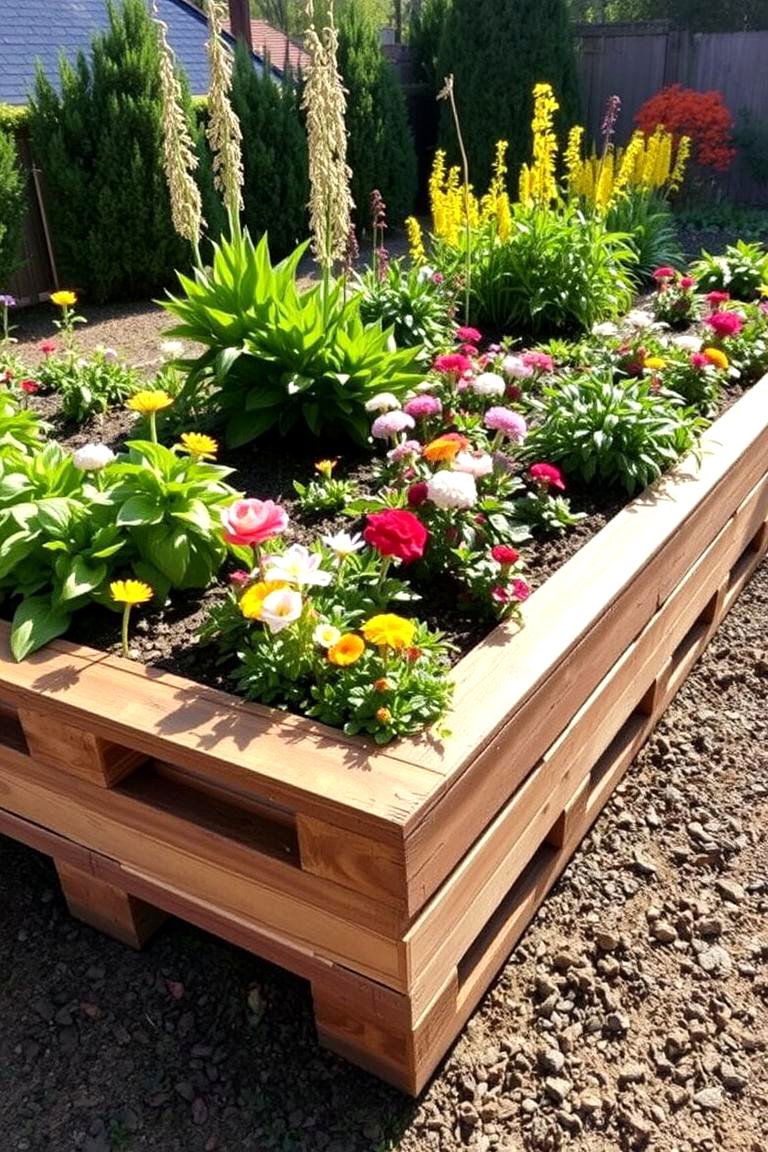
Landscape timbers provide a sturdy and cost-effective solution for garden borders. Made from treated wood, these timbers are resistant to rotting, making them ideal for outdoor use. They can be stacked to create raised beds or simply laid in a straight line to separate areas within your garden. With their natural wood grain, landscape timbers bring warmth and texture to your outdoor space, adding character and definition.
13. Vinyl Edging
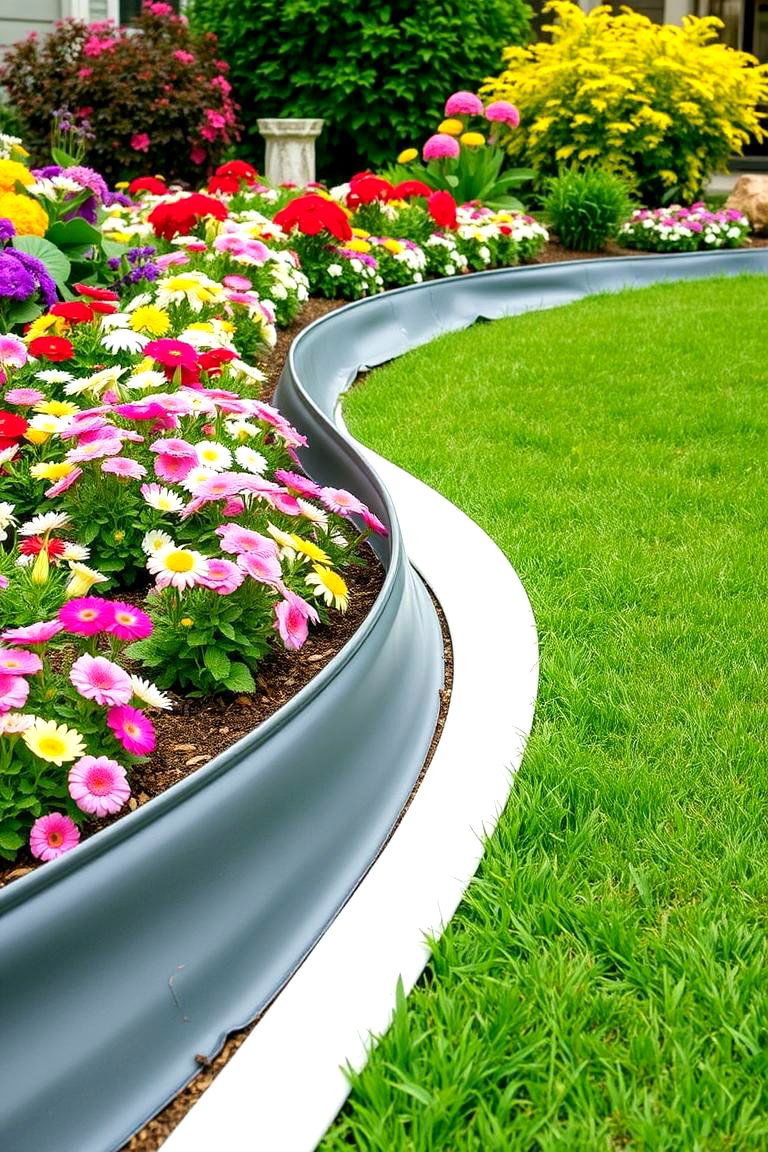
Vinyl edging is an excellent low-maintenance solution for homeowners looking for a hassle-free option. It’s durable, weather-resistant, and won’t crack, warp, or fade over time. Vinyl edging is flexible, so it can be installed in both straight lines and curves, making it a versatile choice for various garden layouts. Available in different colors and styles, vinyl edging blends seamlessly with different landscape designs while keeping weeds and grass at bay.
14. Corkscrew Willow Edging

If you’re looking for a natural and whimsical garden edge, corkscrew willows offer a unique solution. Their twisted branches provide an interesting texture and can be woven together to form a low, living fence. The corkscrew willow’s dense growth helps keep weeds at bay, while also adding visual interest to your garden. This type of edging works best in more informal garden settings, where the beauty of natural growth can be fully appreciated.
15. Bamboo Edging

Bamboo is a versatile and eco-friendly option that adds a touch of the exotic to your garden. Its sleek, tall stalks are perfect for creating a simple yet elegant border around garden beds, walkways, or patios. Bamboo is highly durable and grows quickly, making it an ideal plant for fast-growing borders. It’s also a great way to add height and texture to your garden while maintaining a natural look.
16. Slate Tile Edging
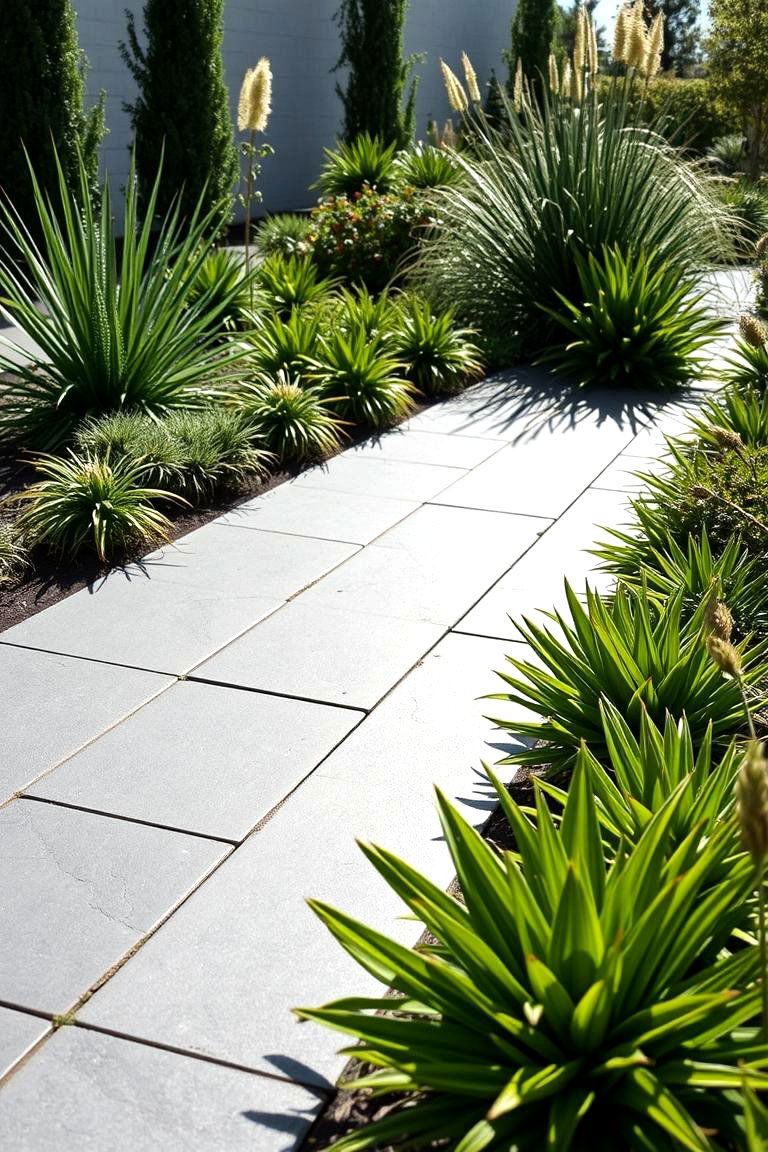
Slate tiles offer a more refined, sophisticated look that is perfect for contemporary gardens. Their smooth, sleek texture and deep colors can create a luxurious, modern aesthetic. Slate is durable and resistant to weather, making it a reliable option for outdoor use. Use slate tiles to create a clean and geometric border that complements a minimalist landscape design or modern garden theme.
17. Rope Edging

For a more rustic or nautical-themed garden, rope edging adds a touch of charm. Made from thick, braided twine, this material is perfect for creating natural boundaries around flower beds or garden pathways. Rope is flexible and can be arranged in various shapes, providing a more casual and informal feel. Additionally, its texture adds a tactile element that pairs beautifully with garden greenery.
18. Hedge Edging
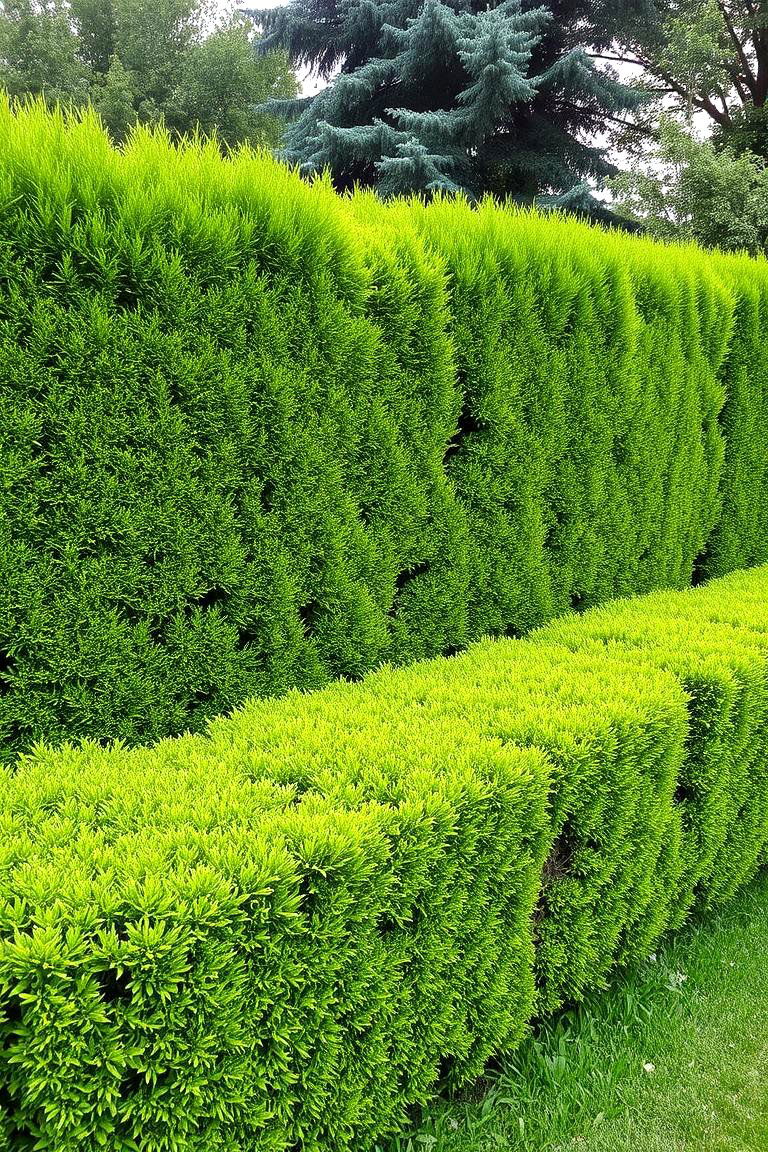
Hedge edging is an evergreen option that provides both beauty and functionality. Whether you opt for a formal, trimmed hedge or a more relaxed, natural look, hedges can provide a lush, green boundary for your garden. A low-growing hedge can define garden spaces, while taller varieties can offer privacy and protection. The best part is that hedges require little maintenance once established and can be shaped to your desired height.
19. Gravel and Border Stones Combination
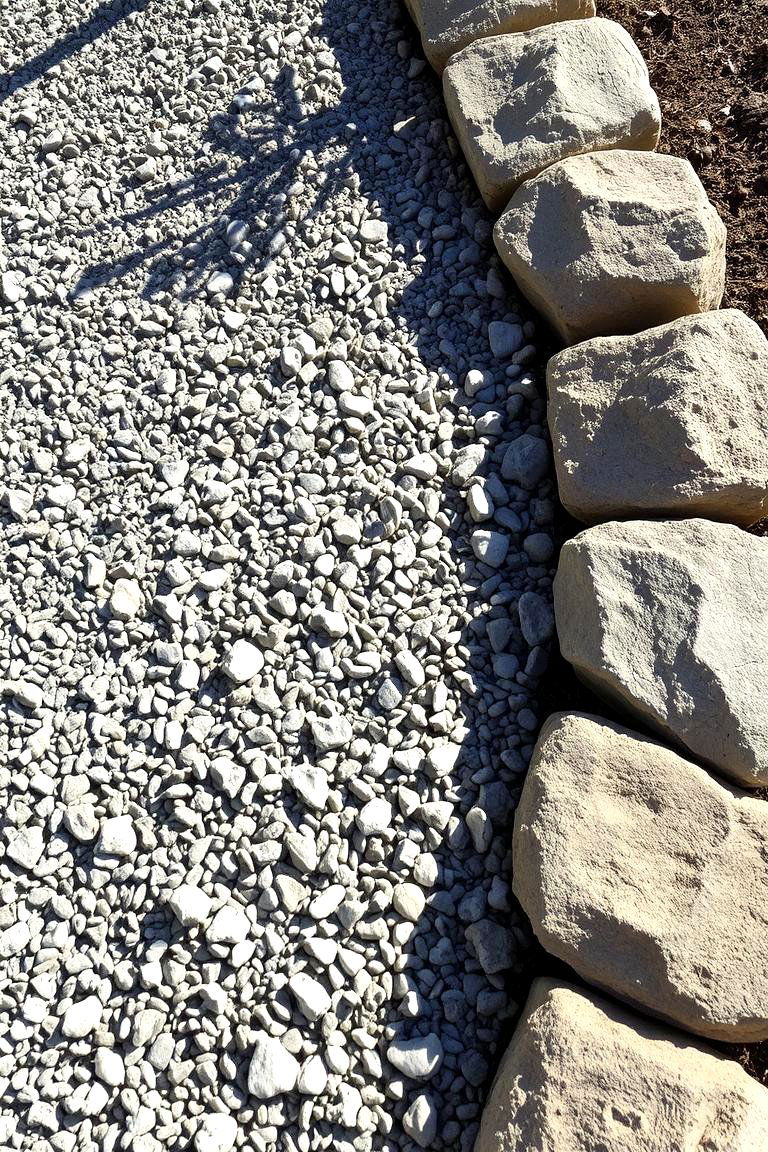
Combining gravel with border stones creates a clean yet rustic aesthetic. Border stones help keep the gravel in place while offering structure and definition. This combination is perfect for creating walkways, outlining flower beds, or adding a natural look to your garden’s edges. The contrast between the smooth gravel and the rugged stones enhances the texture of your outdoor space.
20. Seashell Edging
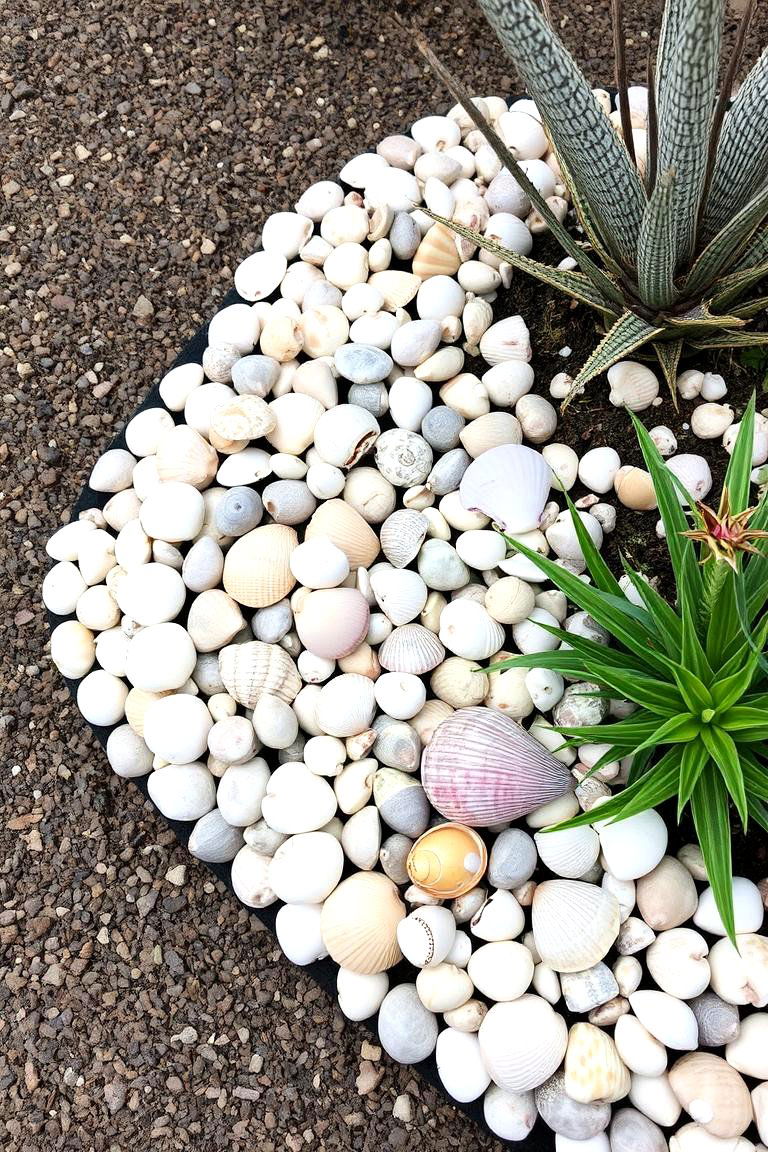
Seashells offer a quirky and visually striking option for garden edging. If you live near the beach or have access to seashells, these can be arranged in a variety of ways to create a unique, coastal-themed border. Seashells add texture and interest, particularly when paired with sand, beach grass, or other coastal plants. This idea is perfect for creating a playful, whimsical edge around your garden.
21. Reclaimed Wood Edging

Reclaimed wood offers an eco-friendly way to create a beautiful garden border. Whether you use old fence boards, wooden pallets, or discarded timber, reclaimed wood adds character and history to your garden. It’s an affordable option that brings warmth to your space. Plus, it’s perfect for gardeners who want to reduce waste while still creating a stylish, unique edge for their outdoor areas.
22. River Rock Edging
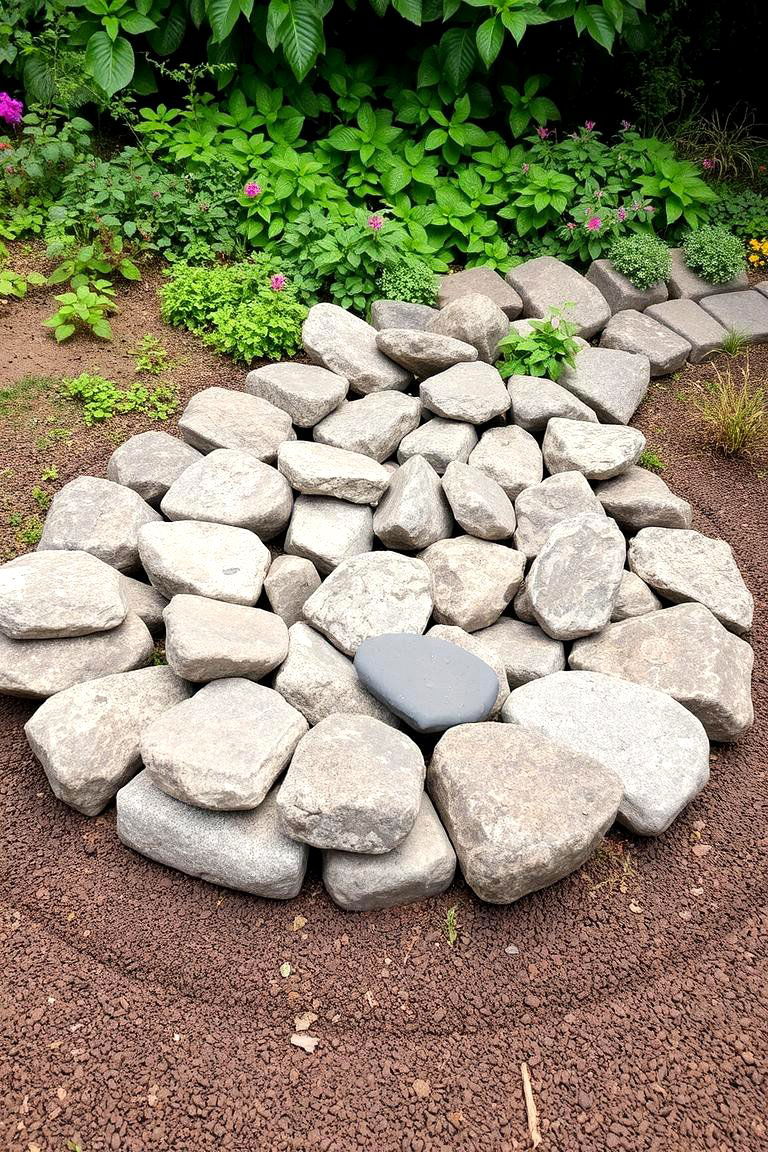
For a more natural and low-maintenance option, river rocks provide a rustic look while keeping your garden organized. These smooth stones work well for creating curved borders, highlighting different plantings, or even forming a dry creek bed. River rocks are highly versatile and can be used in nearly any garden design, from contemporary to cottage-style gardens, adding texture and visual interest.
23. Live Plant Edging

Living plant edging is a unique and eco-friendly approach to define your garden boundaries. Low-growing plants such as lavender, thyme, or creeping thyme can form natural borders while adding color and fragrance to your garden. This method helps with soil retention and keeps weeds in check, while also offering a soft, organic look that blends beautifully with your landscape.
24. Concrete Block Edging
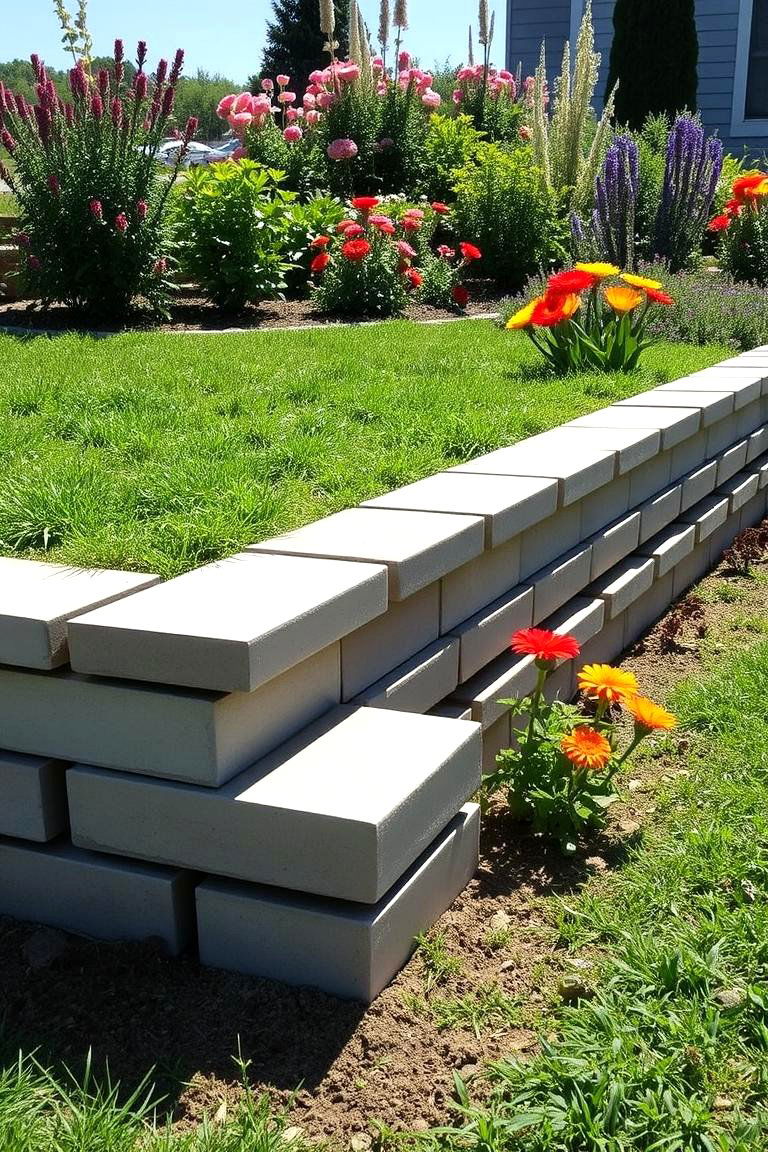
Concrete blocks offer a modern, minimalist solution for garden edging. They come in various sizes and can be stacked to create raised borders or laid flat for a simple, clean look. Concrete blocks are durable and provide a stable, low-maintenance boundary. Use them to create strong, defined lines around flower beds or garden pathways for a sleek and contemporary appearance.
Conclusion:
Garden edging plays a crucial role in defining spaces and enhancing the beauty of your outdoor areas. From stone and wood to metal and recycled materials, the options are endless when it comes to finding the perfect border for your garden. The key is to choose an edging material that complements your style, enhances the natural beauty of your plants, and suits your needs for durability and maintenance. With these 24 garden edging ideas, you’re sure to find inspiration to bring your garden to life with clean, attractive boundaries that stand the test of time.


